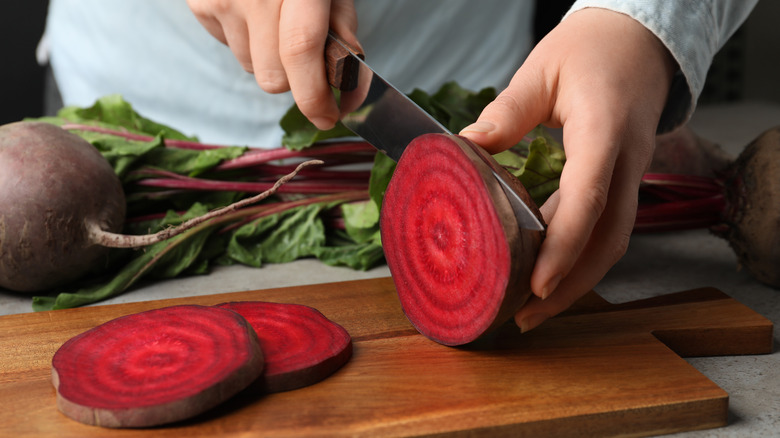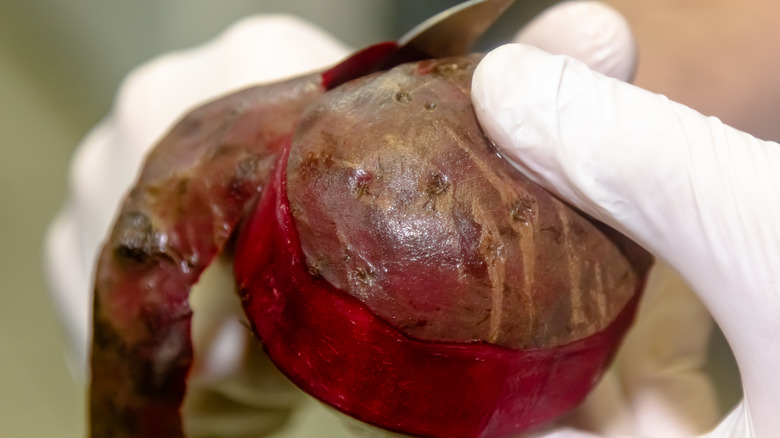How To Cook Fresh Beets Without Staining Everything
If you've ever cooked with beets before, you know their vibrant pink color is part of their charm. They bring their bright rosy hue to recipes like short rib borscht and beet-infused vodka cocktails, but as anyone who's ever dealt with these root vegetables knows, their juices get everywhere. In fact, their juices are exceptionally adept at staining everything from your hands to cutting boards. Thankfully, there is a way to cook with these veggies without ruining everything in sight.
To keep your hands free of pink marks, make like a restaurant chef and wear disposable gloves. You can also wear reusable gloves, but keep in mind that they might get stained and then you'll have to put in a little work to get them back to normal. You can also try rubbing olive oil on your hands before picking up your beets, but make sure to cover every inch of your skin and note that your hands may be a little more slippery while you're prepping your ingredients.
How to prevent stains when cutting or peeling beets
Now that your hands are going to stay clean, what about everything else in your kitchen? Keeping a cutting board pink-free is no small feat, especially when it comes to wooden ones, which absorb juice more easily than plastic. Luckily, you can protect your wooden cutting board by brushing it with olive oil or spraying it with a cooking spray. The oils should act as a barrier between the juice and your board — just make sure to choose one with a neutral flavor so it doesn't impact any ingredients you're cutting up.
If you'd rather not get a little greasy, you can also try layering wax paper or plastic wrap over your board. Or just stick with a plastic version, which can shed most stains in the dishwasher after being rubbed with some salt and lemon juice. If you're also having trouble containing the juices when peeling beets, you have a few options.
Try cooking them first with the skin on and adding an acid like lemon juice or vinegar in the pot, to prevent bleeding. Then, run them under the sink in a colander instead of removing the outer layer by hand, so you can avoid skin and cutting board contact. As an alternative, try using a vegetable peeler over the sink with gloved hands. While these steps may take a little extra effort, they'll pay off when your surroundings aren't drowning in pink.

